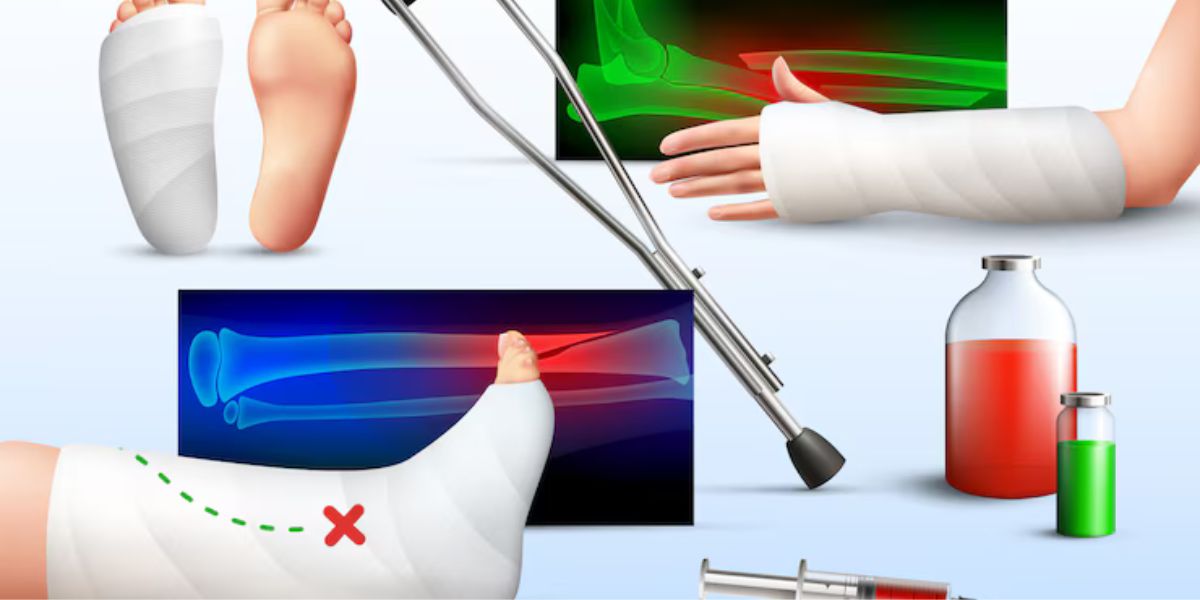What Is Midfoot Fusion?
Midfoot fusion surgery offers a powerful solution for people struggling with chronic foot pain caused by arthritis or injury. This procedure involves joining the small bones in the middle of the foot to provide midfoot bone stabilization and relieve discomfort. Many patients seek this surgery after conservative treatments fail to ease their foot pain or correct deformities. By stopping painful motion between bones, tarsometatarsal fusion improves foot function and walking ability. Although recovery can be lengthy and requires careful care, the long-term benefits often include improved stability and reduced pain. Understanding what this surgery entails helps patients prepare for the journey ahead with confidence and clear expectations.
Why Is Midfoot Fusion Performed?
People usually need foot arthritis surgery like midfoot fusion when arthritis damages the joints in the midfoot. This damage causes chronic pain and difficulty walking. Sometimes, traumatic injuries or deformities also require this surgery to correct the foot’s shape and function. If conservative treatments fail, doctors recommend fusion to provide stability and long-term pain relief.
By stabilizing the foot bones through surgical bone fixation, midfoot fusion helps prevent further damage and eases discomfort. The surgery corrects foot deformity and restores balance, which is crucial for daily activities like standing and walking.
How Is Midfoot Fusion Surgery Done?
During the midfoot fusion procedure, your surgeon first removes damaged cartilage and prepares the bones to heal together. Plates and screws, known as hardware plates and screws, hold the bones in place for healing. This surgical bone fixation ensures the bones fuse properly over time. The operation typically takes one to two hours under general anesthesia.
Doctors follow strict postoperative care protocols to prevent complications. After surgery, the foot is usually immobilized in a cast or boot to protect the fusion site. The hardware often stays permanently but may be removed in some cases if it causes irritation.
What Happens During Hospital Stay?
Your hospital stay after foot surgery usually lasts one to two days. Medical staff will manage pain and monitor for early complications like infection after surgery. Nurses help you with mobility and teach you how to use mobility aids after surgery such as crutches or wheelchairs.
This early period focuses on protecting the surgical site and beginning gentle movement to prevent stiffness. Understanding postoperative recovery from the start improves healing and reduces hospital stay length.
What Is the Recovery Process Like?
The patient recovery timeline for midfoot fusion is gradual and requires patience. Initially, you must follow strict weight-bearing restrictions to allow the bones to heal without stress. This phase lasts about six to eight weeks, during which physical therapy focuses on maintaining ankle and knee strength without stressing the foot.
After bones fuse, therapy shifts to rehabilitation exercises for foot that improve flexibility and strength. Full recovery can take several months. This process aims to restore foot mobility after surgery and improve overall function while minimizing the risk of bone healing complications like non-union of bones.
When Can I Walk Again After Midfoot Fusion?
Walking after midfoot fusion usually begins with limited weight bearing around 6 to 8 weeks post-op. Your surgeon will gradually allow more pressure as the fusion strengthens. A complete return to normal walking may take 3 to 6 months, depending on your healing speed and adherence to therapy.
Factors like age, overall health, and the severity of your original condition impact how soon you walk again. Physical therapists guide this process carefully to avoid setbacks.
What Are the Risks and Possible Complications?
Every surgery carries some risk, and midfoot fusion surgery is no exception. Possible complications include infection after surgery, nerve damage risk, and bone healing complications like delayed union or non-union of bones. Sometimes, hardware can irritate soft tissues, leading to the need for revision foot surgery.
Additionally, stiffness and changes in gait may occur, impacting long-term foot function after surgery. Following postoperative care protocols carefully reduces risks. Your surgeon will discuss these dangers and signs to watch for during recovery.
How Will Midfoot Fusion Affect My Walking and Foot Function?
Midfoot fusion changes the way your foot moves because it permanently joins some bones. This often results in decreased flexibility but more stability. Many patients notice improved foot pain relief and better walking ability despite reduced joint motion.
However, some experience altered gait patterns or slight discomfort due to stiffness. Understanding gait changes after surgery helps you adjust expectations. Physical therapy plays a key role in optimizing foot function and improving balance.

How Do I Manage Daily Life After Surgery?
Managing daily life after midfoot fusion means using mobility aids after surgery and modifying activities to protect your foot. Crutches, walkers, or wheelchairs help with movement during weight-bearing restrictions. Simple tasks might require adjustments until you regain strength and balance.
Pain management and regular wound care are crucial in the early phase. You should avoid high-impact activities until cleared by your doctor. Planning ahead and seeking support can ease this transition.
Do I Need Additional Surgeries or Hardware Removal?
Most patients keep their hardware plates and screws permanently without issues. However, if the hardware causes pain or irritation, your surgeon might recommend hardware removal surgery after the bones have fused fully.
Sometimes, complications like infection or non-union lead to revision foot surgery to fix problems. Regular follow-up with your orthopedic specialist helps catch these issues early.
Tips for a Successful Recovery and When to See Your Doctor
A successful recovery depends on following your doctor’s advice closely. Maintaining a healthy diet, doing prescribed rehabilitation exercises for foot, and avoiding smoking support faster healing. Report any signs of infection, increasing pain, or unusual swelling immediately.
Stay consistent with orthopedic follow-up care to monitor bone healing and hardware status. Your doctor will guide you through each stage of recovery to ensure the best possible outcome.
Long Term Problems After Bunion Surgery: What You Should Know
| Aspect | Typical Timeline / Notes |
|---|---|
| Hospital stay | 1-2 days |
| Non-weight-bearing phase | 6-8 weeks |
| Partial weight bearing | After 6-8 weeks, gradual |
| Full recovery time | 3-6 months, varies by individual |
| Physical therapy start | Early post-op, low impact |
| Hardware removal | Rare, only if irritation or complications |
Quote:
“Midfoot fusion helped me walk without pain again, even though my foot feels stiffer. The recovery was tough but worth it,” says a recent patient.
This article gives you everything you need to understand the midfoot fusion procedure, from why it’s done to how you can recover well and avoid risks. If you have foot arthritis or severe pain, this surgery might offer the relief you need.
FAQs
What is the recovery time for midfoot fusion surgery?
Recovery typically takes 3 to 6 months.
Is midfoot fusion surgery worth it?
Many find it worth it for pain relief and improved foot stability.
Can you walk normally after foot fusion surgery?
Most patients can walk normally after full recovery.
What are the side effects of a midfoot fusion?
Common side effects include stiffness, swelling, and risk of infection.
Welcome to Heel Tooth! I’m Lee Marvin.

